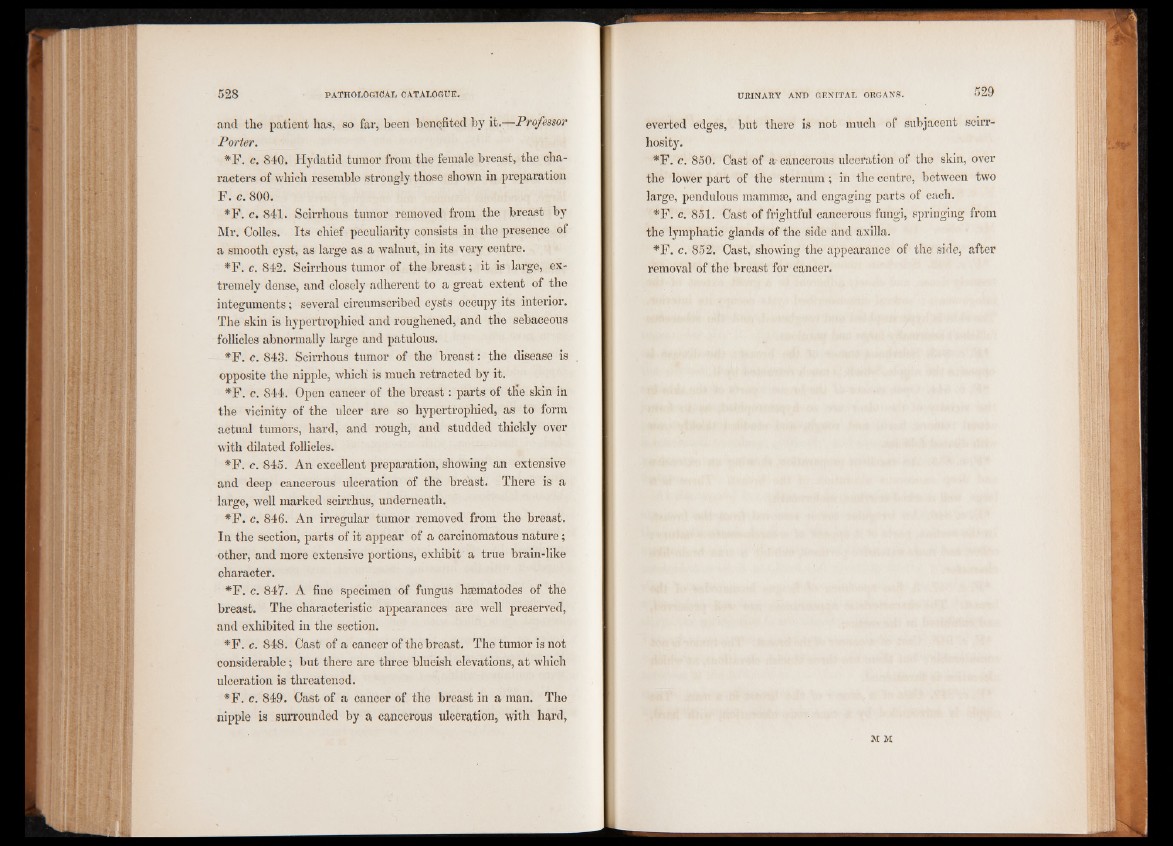
and the patient has, so far, been benefited by it.-—Professor
Porter.
*F. c. 840. Hydatid tumor from the female breast, the characters
of which resemble strongly those shown in preparation
F. c. 800.
*F. c. 841. Scirrhous tumor removed from the breast by
Mr. Colles. Its chief peculiarity consists in the presence of
a smooth cyst, as large as a walnut, in its very centre.
*F. c. 842. Scirrhous tumor of the breast; it is large, extremely
dense, and closely adherent to a great extent of the
integuments; several circumscribed cysts occupy its interior.
The skin is hypertrophied and roughened, and the sebaceous
follicles abnormally large and patulous.
*F. c. 843. Scirrhous tumor of the breast: the disease is
opposite the nipple, which' is much retracted by it.
*F. c. 844. Open cancer of the breast: parts of the skin in
the vicinity of the ulcer are so hypertrophied, as to form
actual tumors, hard, and rough, and studded thickly over
with dilated follicles.
*F. c. 845. An excellent preparation, showing an extensive
and deep cancerous ulceration of the breast. There is a
large, well marked scirrhus, underneath.
*F. c. 846. An irregular tumor removed from the breast.
In the section, parts of it appear of a carcinomatous nature;
other, and more extensive portions, exhibit a true brain-like
character.
*F. c. 847. A fine specimen of fungus hsematodes of the
breast. The characteristic appearances are well preserved,
and exhibited in the section.
*F. c. 848. Oast of a cancer of the breast. The tumor is not
considerable; but there are three blueish elevations, at which
ulceration is threatened.
*F. c. 849. Oast of a cancer of the breast in a man. The
nipple is surrounded by a cancerous ulceration, with hard,
everted edges, but there is not much of subjacent scirr-
hosity.
*F. c. 850. Oast of a-cancerous ulceration of the skin, over
the lower part of the sternum; in the centre, between two
large, pendulous mammae, and engaging parts of each.
*F. c. 851. Oast of frightful cancerous fungi, springing from
the lymphatic glands of the side and axilla.
*F. c. 852. Oast, showing the appearance of the side, after
removal of the breast for cancer.
M M